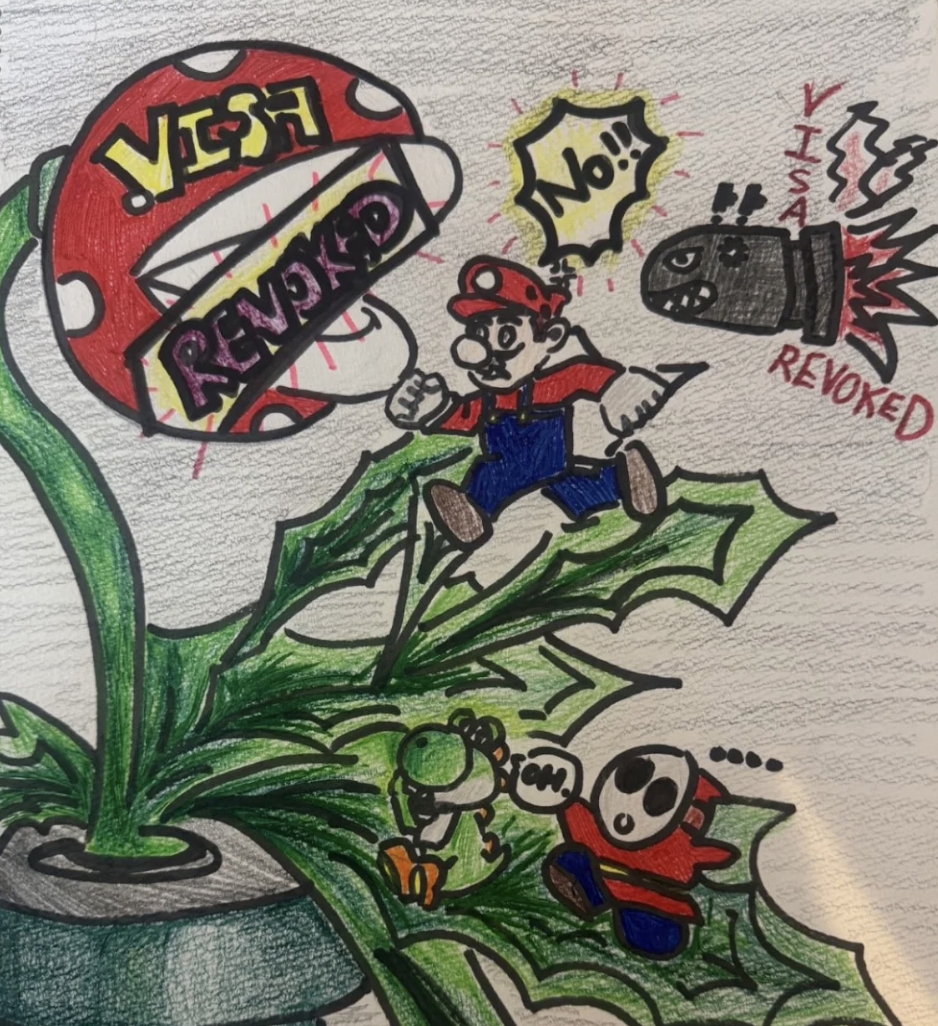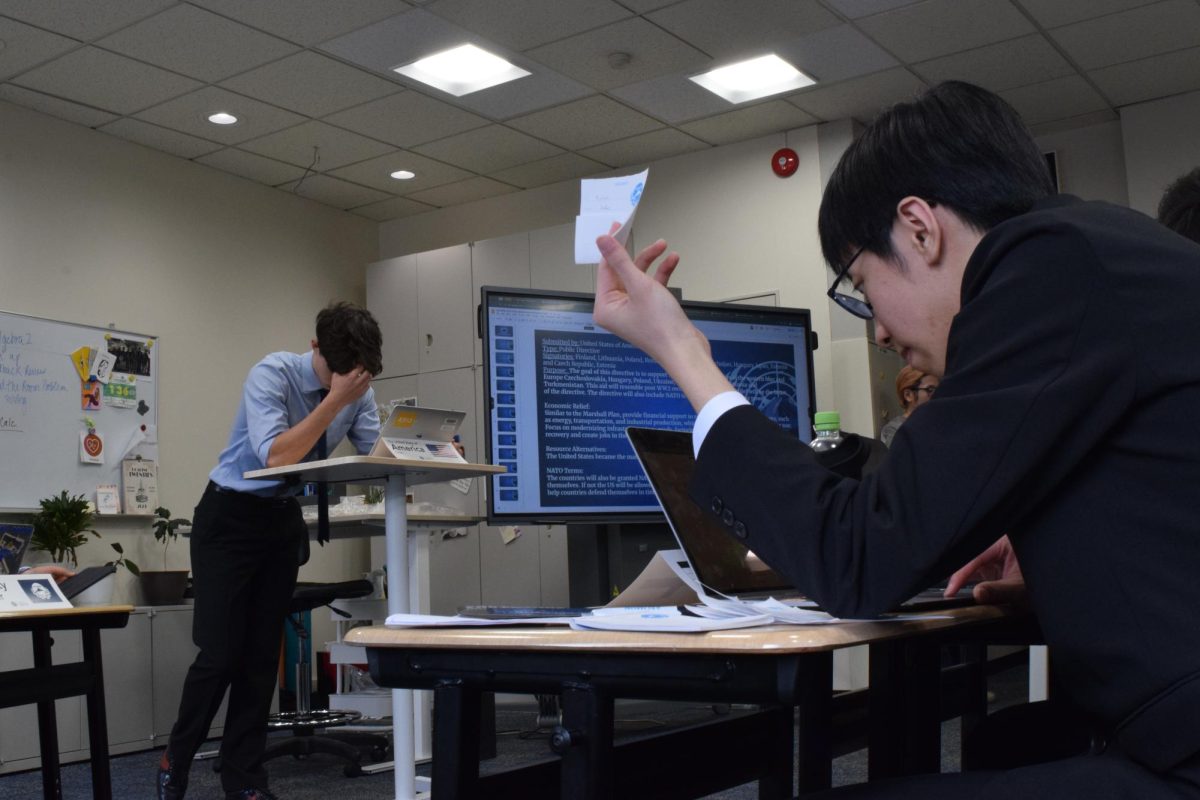A World Tour Through Five College Application Systems
May 23, 2023
The time has come for seniors to enjoy their last few days at ASIJ. As for the younger students, the juniors anticipate their summer with dread, as the college application process approaches. Current sophomores are looking up with wondrous, apprehensive eyes at their future.
Nowadays, there is a significant emphasis on where one goes to college — though the question of whether or not it actually matters in terms of personal development and employability is still being debated. And as if that sizable pressure isn’t enough, the expanding international college program scene has made it even more difficult to traverse the college application process.
As I watched my older brother decide between Japan or America for university, I wondered about the different university systems between these two countries. So, here is some information I compiled.
One of Europe’s distinctions is that each country has its nationally governed higher education system, with them all being a part of the European Higher Education (EHEA). The EHEA is dedicated to providing quality higher education to all European citizens, and there are three different systems that it promotes amongst nations: the Bologna Process, the ECTS System, and Lifelong Learning.
The Bologna Declaration was signed by twenty-nine European countries in 1999 to harmonize European higher education. The Bologna Process introduces a three-level system: the bachelor’s degree, which takes three to four years; the master’s degree, which takes one to two years; and the doctoral degree, which takes two to five years. These qualifications are valid in all European countries and beyond. It is quite similar to the U.S.’s college system, which requires the same facilities and years for the same qualifications.
The ECTS System is the European Credit Transfer and Accumulation System. In Europe, academic credits can be gained by attending school consistently and successfully (one school year equals 60 credits). The ECTS enables students to transfer their credits into academic opportunities–such as college attendance. This European Union-supported system supports older students who want to study at universities, but part-time, or without examination requirements.
Lifelong Learning, compared to the Bologna Declaration and ECTS, is more a concept than a system. According to the European Training Foundation (ETF), it is the promotion of “formal, non-formal, and informal learning in all contexts.” To comply with this statement, the ETF has donated money, built schools, and undertaken further projects to spread learning to all of Europe.
As an additional note, college examinations are also a tradition in Europe, and are required to enter any type of higher education (occasionally discounted for ECTS students). For example, in France, a famous national exam called the baccalaureate determines whether or not a student is qualified for secondary education. The application process in Europe also largely depends on grades–one’s standing and qualifications earned in class, opposed to extracurriculars and essays. However, tuition in Europe is a lot cheaper than in the U.S. Depending on citizenship and location, it can even be free.
To talk about the U.S. college system, an understanding of its different colleges must first be understood. America has both state government-funded colleges, and private universities which acquire their own money. Students in the U.S. can acquire a bachelor’s degree, a master’s, or a doctorate in that order. For specialized learning, there are vocational universities and associate’s degrees.
Now, a unique aspect of the U.S. higher education system is the value placed upon the liberal arts. Students can choose a STEM major, but can’t expect to have more than half of their total classes in that major. Required core curriculum classes dominate other slots, with many of these classes involving the development of basic cognitive skills (e.g., critical thinking).
Lastly, the U.S. differs from Europe regarding tuition. Compared to the six thousand to fifteen thousand euros yearly for international students in Europe, out-of-state students in the U.S. can expect to pay around forty-four thousand dollars annually for public schools, or fifty-four thousand yearly for private universities.
As for applications to the U.S., universities demand a high commitment from students to their extracurriculars and passion projects.
Asia is another popular study destination for international students. Its system is similar to Europe’s in that it places less emphasis on liberal arts classes.
Countries such as Dubai, Singapore, and Vietnam have gained new traction due to their affordable tuition and living costs, world-ranked universities, and appealing environments. Japan ranks tenth in the QS Higher Education System Strength rankings due to its premier innovation science and artificial intelligence programs.
Similarly, South America’s international student programs are expanding. South America is an excellent option with generally affordable tuition prices, notably in Ecuador and Peru, and some highly ranked universities. Student life varies from nation to nation, but the cultures are rich and diverse. Another benefit is that there are many scholarship opportunities, and new international student study programs offer accommodation. South America’s system is similar to Europe’s.
As for Africa, the top universities are concentrated in the northern and southern areas, with the University of Cape Town placing first in rankings. Some advantages of African universities include the diversity and opportunity for adventure travel.
Overall, there are a plethora of great universities across the world, and each is unique in its own way. Every university will bring something different and new to a student’s life. In any case, one’s life after high school, whether it is at university or not, entirely depends on what the individual makes of it.



















